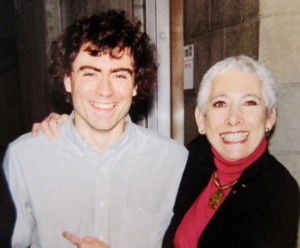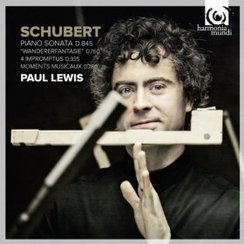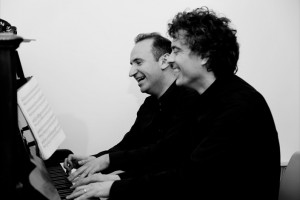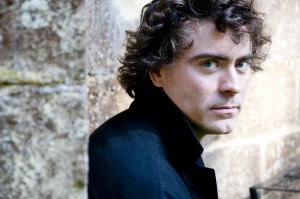Program Notes: Marc-André Hamelin
Alban Berg: Piano sonata, Op. 1
“Among the most auspicious Opus Ones ever written,” was Glenn Gould’s assessment of Alban Berg’s piano sonata. Berg wrote this work in 1907-08 while studying with Arnold Schönberg. Originally it was intended to have three movements but, after completing the first, Berg found that “for a long time nothing worthwhile occurred to me, whereupon Schoenberg remarked, “In that case, you have said everything there was to be said.”
Schönberg’s instincts were correct, for Berg’s fourteen-minute, one-movement sonata is indeed a totally unified dramatic event that speaks volumes with the utmost economy. In spite of the music’s modern sound, it is nevertheless grounded in the formal classical layout consisting of a repeated exposition, development and recapitulation. Although a principal subject (opening phrase) and a subordinate theme (possibly two subordinate themes, depending on how you regard Berg’s “developing variation” procedure) can be identified, it is more through tempo changes than through contrasting tonalities or moods that they are recognizable. The second theme is slower, the third slower still. The moment of greatest tension arrives registrally, dynamically and texturally at just about the midpoint, which Berg marks ffff. By the end, the listener has experienced a sense of fulfillment, a sense that Berg has indeed said everything there was to say, and that he has left, in Gould’s words again, “the impression of great peaks and lesser crests, calibrated as carefully and achieved as inevitably as in music of a more orthodox nature.”
Gabriel Fauré: Impromptu no. 2 in F minor, Op. 31; Barcarolle no. 3 in G flat major, Op. 42
Like Chopin, Fauré was basically a lyricist who excelled in small, intimate forms. For both, the piano was central to their mode of expression, and both excelled in harmonic sophistication and in advanced techniques of modulation.
The term impromptu implies something conceived on the spur of the moment, born of poetic fancy, giving less heed to structure and formal procedures than to delicacy of ornamentation and casual style. Nevertheless, Fauré’s five works in the genre, like Chopin’s, exhibit well-defined formal balance. The second (1883) is one of his most beloved and frequently heard piano pieces, written in the tarantella rhythm (a pulse of two triplets per bar in a rapidly swirling pattern). The third of Fauré’s thirteen barcarolles (1885) is filled with a sense of languor, but one spiked with piquant dissonances. The tonality weaves in and out between major and minor, while the delicate and pervasive ornaments to the melodic line caused the famous French pianist Marguerite Long to poetically remark that, in one instance, they “crown the theme like sea foam on the edge of a wave.”
Claude Debussy: Images, book 1; L’isle joyeuse
“I love pictures (images) almost as much as music,” Debussy once wrote. Hence, we find not only a great many sound pictures throughout his music, but no fewer than three groups of pieces actually entitled “Images,” each a triptych in itself: two for piano (1905 and 1907) and one for orchestra (1906-1912).
Reflets dans l’eau (Reflections in the water) represents one of the finest examples of musical Impressionism. Whole-tone scales, pentatonic scales, floating blocks of parallel chords, vague washes of tonal color, subtly blurred sonorities, long pedal-points and a new kind of “harmonic chemistry,” as Debussy called it, all are elements in the world of musical Impressionism. In the second piece, Debussy pays his respects to the eighteenth-century master Jean-Philippe Rameau. The choice of the sarabande (a slow, stately dance in triple meter) is in itself an act of homage to Rameau’s predilection for classic dance forms. Impish humor, gaiety and a sense of irony infuse Mouvement.
L’isle joyeuse (1904) ranks as one of Debussy’s most ambitious, sensual and dazzling piano works. It is sometimes regarded as a musical representation of Watteau’s Embarquement pour Cythère, for, like the painting, it is richly imbued with gaiety and animation.
Marc-André Hamelin: Variation on a Theme of Paganini
In the tradition of so many great pianists of the past (Mozart, Beethoven, Chopin, Liszt, Busoni, Rachmaninoff … ), Marc-André Hamelin the virtuoso is also a composer. To showcase his diabolical virtuosity, Hamelin wrote in 2011 a ten-minute series of variations based on the famous theme of Paganini’s 24th Caprice for solo violin. Dozens, perhaps hundreds of other composers have also been stirred to this task, but none with greater panache and brilliance than Hamelin. Even the likes of Liszt and Rachmaninoff would surely blanch in face of the fiendishly difficult technical acrobatics found in Hamelin’s work. By turns, devilish, mischievous, playful, coy, mysterious and convulsive, it remains continuously fascinating. Hamelin himself concedes that it “breaks the mold; it constantly tries to push the envelope as far as what may be esthetically acceptable!”
Sergei Rachmaninoff: two Preludes; Piano sonata no. 2 in B flat minor, Op. 36
In 1903, Rachmaninoff brought out a group of ten preludes (Op. 23) which, as one writer ventured, was an act of self-defense, an attempt to channel the overwhelming popularity of the C sharp minor prelude of 1892, into other, similar pieces. A further group of thirteen was published as Op. 32 in 1910. Each seeks to capture the essence of a mood through the elaboration of a specific figuration, motif, or rhythmic pattern. The G major Prelude is one of the most sublime, reposed and sheerly beautiful. “A feeling of tranquility dwells here,” writes biographer Max Harrison, “and this piece stands with the G-sharp minor prelude [the one we hear next on Mr. Hamelin’s program] as the purest expression of lyricism in all Rachmaninoff’s piano music. The melody sings limpidly above evanescent arpeggios [in the left hand].” The G sharp minor prelude, another popular favorite, shimmers throughout with coruscating brilliance.
Rachmaninoff wrote only two piano sonatas, the First in 1907, the Second in 1913. He heavily revised the original version of the Second in 1931, considerably shortening it and lightening the textures in numerous passages. Although not especially long in minutes, this sonata is big in scope and impact, embracing an enormous emotional range, and approaching symphonic proportions in its textures and polyphonic complexities. The sound of heavy, pounding bells, which fascinated the composer all his life, and which found their way into so many of his scores, is evoked frequently over the course of the sonata.
The three movements are not defined as such in the score, and are played without pause, underscoring their close interrelationship. The first movement conforms to a traditional sonata-allegro structure. The second serves as an oasis of quiet meditation separating the traumas of the first movement from the virtuoso pyrotechnics of the third.
Program Notes by Richard Markow, 2012








